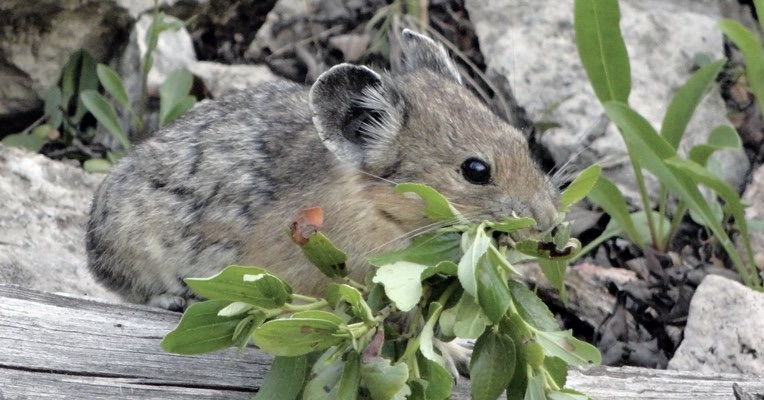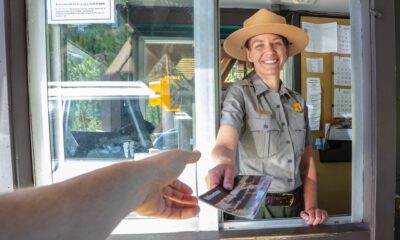Arts & Entertainment
Climate change and the uncertain future of our parks
Published
4 years agoon
Posted By
Admin

By Todd Wilkinson EBS Environmental Columnist
Whatever opinions we hold—one side making a strident claim and another striving to debunk it—time has a way of settling differences in perspective.
I remember after the 1988 Yellowstone forest fires, politicians called the park a moonscape that would never recover. And after wolf reintroduction 25 years ago, some hunters and ranchers asserted that lobos would destroy the elk population and the livestock industry before turning their hungry mouths on children.
Yes, time has a way of sorting out truth from windshield biology and one person who had to deal with the latter was John D. Varley, who as the chief scientist in Yellowstone often had to field questions about post-fire effects and what was likely to result from bringing wolves back.
Today, we know that the predictors of doom were wrong. But there is another issue—human caused climate change—that will continue to play out for decades and no one, at the moment, knows exactly what the effects will be. The only certainty is that if we have lighter snowpacks it won’t be good and that if summer conditions are hotter and drier that we’ll have more forest fires and some species of trees that thrive in cooler, moister conditions might not come back.
I often reflect on interviews I’ve done because they allow us to consider if predictions in the past panned out. A decade after wolves were brought back to Yellowstone, Varley and I had a conversation not long after he retired following 43 years in government service, 33 of those as a biologist.
About changes in climate that were already being detected, he said, “For those of us who remember the 1970s and the heavy snows and frigid temperatures, who the hell would have ever wanted to move here? The answer is that not many people did.
“I try to puzzle through what climate change means for a place like Yellowstone and it’s really complicated,” he added. “Will it be warmer and drier or warmer and wetter? I think those are the most commonly held views.”
Federal, state and independent researchers in the years since have confirmed that average temperatures are warmer, snow is melting earlier and faster, and that summer heat is more than offsetting precipitation, setting up forests for big fires.
Whitebark pine tree forests, as just one indicator, continue to die. Researchers also say that pikas in some areas are disappearing because of heat at higher elevations. Varley predicted the arrival of new pathogens, parasites and unwanted plants that might better thrive in warmer temperatures.
Some of those could have serious consequences for native plants and the animals that rely on them.
Already, researchers say, temperatures in park are higher now than they were 50 years ago—especially in springtime—and nighttime temperatures are increasing more rapidly than daytime thermometer readings.
In the last half century, the growing season (time between last freeze of spring and first freeze of fall) has increased by 30 days. At the northeast entrance near Cooke City, there are now 60 more days annually above freezing than in the mid 1980s, and parkwide 30 fewer days with snow on the ground than in the 1960s.
“The greatest challenges will not be created by the presence or absence of things we already know about,” Varley said in 2006. “They will probably come from things more insidious and harder to predict. It could mean warmer waterways creating hospitable conditions for a mudsnail that turns a trajectory of what is known to an outcome that is not known. It will affect that proportion of animals present in a place that will be different than what we now experience.”
Preservation as we have known it for over 100 years has been associated with protection of a given piece of land, he said. “The way you provide protection is you use your police powers and that got the job done,” he says. “I think for present-day managers, that approach is still needed against evildoers, but with climate change there’s going to be an increasing level of helplessness when the problems they face are not caused by poachers but by auto or factory emissions originating in the People’s Republic of China. You can’t protect the boundaries of special places any more. It’s out of your hands.”
Yellowstone on its 200th anniversary in 2072 will be a much different place than it is today, Varley said. That doesn’t mean science no longer matters; just the opposite, he said. Facts still provide the best possible defense for trying to hold onto the things you want to save. But will they be enough?
Todd Wilkinson is the founder of Bozeman-based Mountain Journal and is a correspondent for National Geographic. He’s also the author of the book “Grizzlies of Pilgrim Creek” about famous Jackson Hole grizzly bear 399.
Upcoming Events
april, 2024
Event Type :
All
All
Arts
Education
Music
Other
Sports
Event Details
Children turning 5 on or before 9/10/2024:
more
Event Details
Children turning 5 on or before
9/10/2024: Kindergarten
enrollment for the 2024-2025 school year can be completed by following the
registration process now.
Children
born on or after September 11, 2019: 4K enrollment is now open for
families that have a 4-year-old they would like to enroll in our program for
the 2023-2024 school year. Please complete the 4K Interest Form to
express your interest. Completing this form does not guarantee enrollment into
the 4K program. Enrollment is capped at twenty 4-year-olds currently
residing within Big Sky School District boundary full time and will be
determined by birth date in calendar order of those born on or after September
11, 2018. Interest form closes on May 30th.
Enrollment now is critical for fall preparations. Thank you!
Time
February 26 (Monday) - April 21 (Sunday)
Event Details
Saturday, March 23rd 6:00-8:00pm We will combine the heart-opening powers of cacao with the transcendental powers of breathwork and sound. Together, these practices will give us the opportunity for a deep
more
Event Details
Saturday, March 23rd 6:00-8:00pm
Time
March 23 (Saturday) 6:00 pm - April 23 (Tuesday) 8:00 pm
Location
Santosha Wellness Center
169 Snowy Mountain Circle
Event Details
We all are familiar with using a limited palette, but do you use one? Do you know how to use a
more
Event Details
We all are familiar with using a limited palette, but do you use one? Do you know how to use a limited palette to create different color combinations? Are you tired of carrying around 15-20 different tubes when you paint plein air? Have you ever wanted to create a certain “mood” in a painting but failed? Do you create a lot of mud? Do you struggle to achieve color harmony? All these problems are addressed in John’s workbook in clear and concise language!
Based on the bestselling “Limited Palatte, Unlimited Color” workbook written by John Pototschnik, the workshop is run by Maggie Shane and Annie McCoy, accomplished landscape (acrylic) and plein air (oil) artists,exhibitors at the Big Sky Artists’ Studio & Gallery and members of the Big Sky Artists Collective.
Each student will receive a copy of “Limited Palette, Unlimited Color” to keep and take home to continue your limited palette journey. We will show you how to use the color wheel and mix your own clean mixtures to successfully create a mood for your paintings.
Each day, we will create a different limited palette color chart and paint a version of a simple landscape using John’s directives. You will then be able to go home and paint more schemes using the book for guidance.
Workshop is open to painters (oil or acrylic) of any level although students must have some basic knowledge of the medium he or she uses. Students will be provided the book ($92 value), color wheel, value scale and canvas papers to complete the daily exercises.
Sundays, April 14, 21 and 28, 2024
Noon until 6PM.
$170.
Time
14 (Sunday) 12:00 pm - 28 (Sunday) 6:00 pm
Event Details
Come join us at Cowboy Coffee as we celebrate a fun night of drinks, games, and meeting others within the community. This event is from 6-8 and all are welcome
Event Details
Come join us at Cowboy Coffee as we celebrate a fun night of drinks, games, and meeting others within the community. This event is from 6-8 and all are welcome to come, if you don’t know who to bring come alone this is a great mixer event! This is an event hosted by Big Sky OUT as we work to provide queer safe spaces throughout the community.
Time
(Sunday) 6:00 pm - 8:00 pm
Location
Cowboy Coffee
25 Town Center Ave. Big Sky, MT 59716











